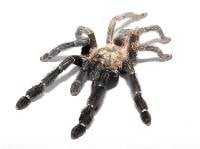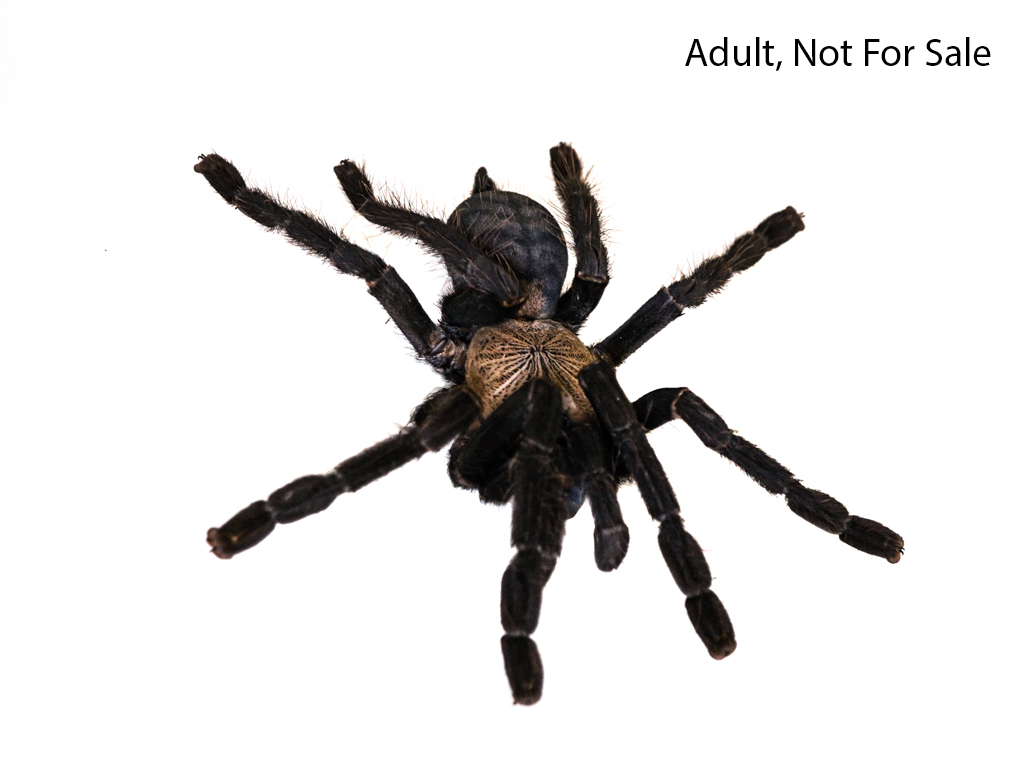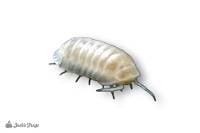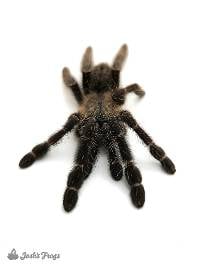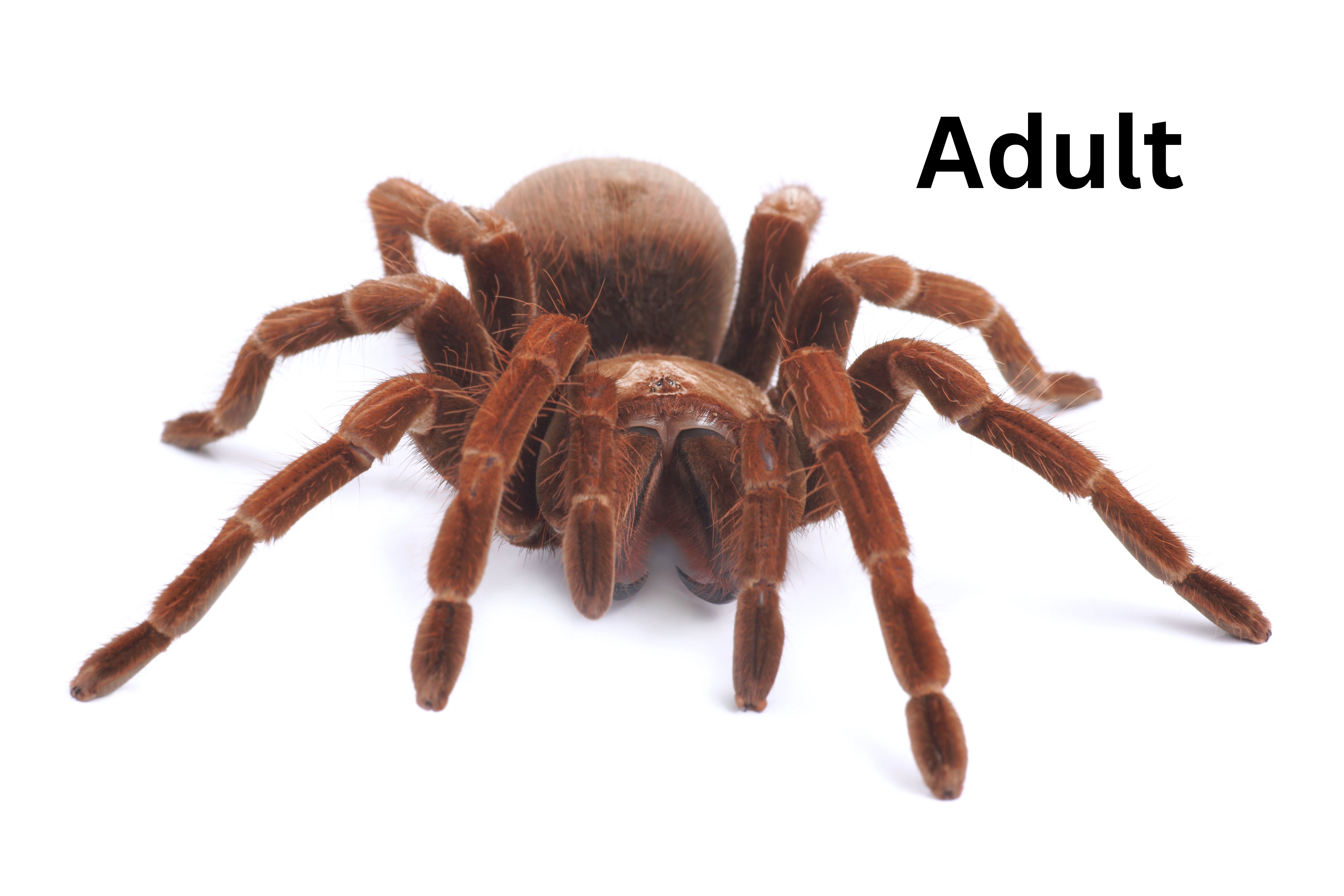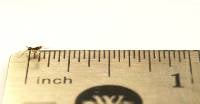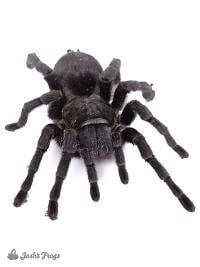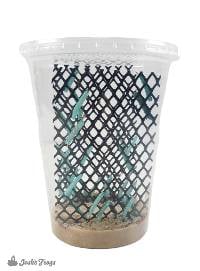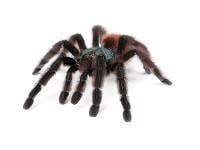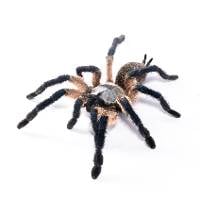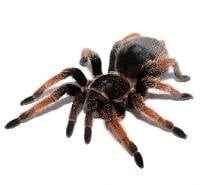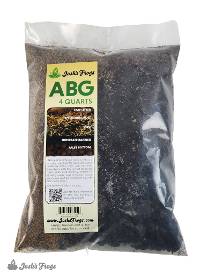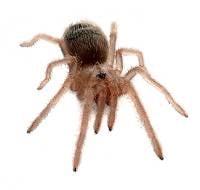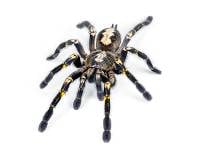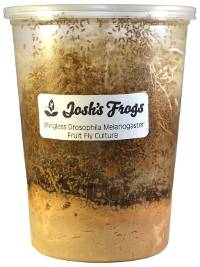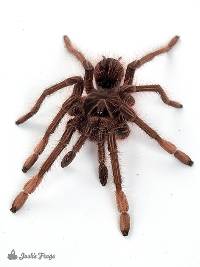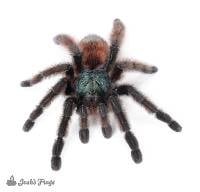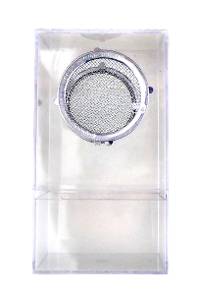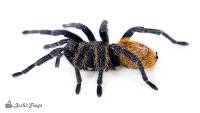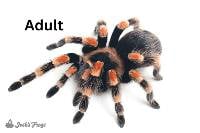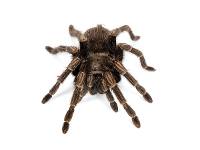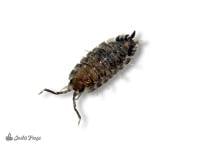Josh's Frogs
Ecuadorian Purple Tarantula - Avicularia purpurea | 1 inch (Captive bred)
Ecuadorian Purple Tarantula - Avicularia purpurea | 1 inch (Captive bred)
$59.99 $99.99
About This Product
Environmental Caution:
When a damp environment has too little air circulation, this can lead to an anaerobic environment.
Where the typical aerobic bacteria helps keep certain types of waste from building up, they are instead replaced by anaerobic bacteria whose waste is more likely to be toxic and harmful. This is often accompanied by a strong swampy smell.
To guard against anaerobic environments, it is important to monitor and control moisture in the environment as well as air quality. One way to maximize both is to have plentiful live plants, as the byproduct of photosynthesis is oxygen and water.
Defining Characteristics:
- This species has a medium growth rate
- This species seeks hollow trees and leaves to construct their web
- Avicularia has Latin roots meaning “Pertaining to” and “small birds”—due to its size and its choice of habitat, it was likely assumed that this species dined on small birds, though in reality they generally choose prey of a more buggy nature
Name: Avicularia purpurea is also commonly known as the Ecuadorian Purple Tarantula.
Recommended Enclosure Size & Setup: Avicularia purpurea is an arboreal species, meaning the enclosure should be taller than it is long. The recommended enclosure height is at least 3 times the spider’s diagonal leg span, and the other dimensions should not be less than 2 times the spider’s diagonal leg span. The enclosure will need to be upgraded as the animal continues to grow.
ABG mix, coco cradle, or Dig-It are good substrate options, but our Pet Bug Team prefers ABG all the way! 4-5 inches of substrate will help the terrarium retain humidity while still allowing for this species to have its high ventilation requirements. They will benefit from a variety of terrarium furniture to climb on and foliage to hide behind.
Live plants can be beneficial to air quality. Our experts have curated kits of easy-to-care-for and SAFE plants for your tarantula. Check them out here!
Temperature (°F): This species thrives in the mid 70s to low 80s, so a temperature of 75 degrees is ideal. Temperatures regularly dipping below 65 degrees, or spiking above 85 degrees should be avoided.
A thermometer is recommended to keep an eye on temperatures in the enclosure.
Humidity: These spiders thrive in a humid environment. The recommended ambient humidity should stay between 70% and 75% This can be achieved by making sure the substrate is always at least slightly moistened. Depending on your location, you may need tools such as a humidifier to achieve this environment. A hygrometer is a great way to monitor the humidity for your animal and see any needed adjustments.
The enclosure sides and décor should be spritzed lightly around twice a week to provide your animal droplets to drink from and keep humidity up, but do not spray your spider directly.
Size: At the time of sale, this animal will be at least 1 inch. Females can grow to be up to 6 inches, and typically the males are a bit smaller.
We use diagonal leg span to measure our spiders.
Age: Before making this species available to our customers, we ensure that they are well-established. This means our spiders are generally molted to a minimum of third instar and will have hatched two to three months prior to being listed for sale.
For spiders that we have not produced in house, we like to get 2 to 3 solid feedings in as well as the aforementioned minimums. They go through a 2-week minimum quarantine process to ensure the health of the animal.
For this species, the average lifespan for males is 3-4 years, and 12-15 years for females when provided an adequate environment.
Feeding: These spiders are currently eating two to three 1/4 inch crickets, once a week. There are a variety of appropriate prey items that you can offer, such as roaches, waxworms, black soldier fly larvae, hornworms, and silkworms. We recommend that the prey items not be much longer than the tarantula's “head” is wide. Larvae are an exception—our larvae are harmless. Since they are very high in fat, they're not the best staple diet, however they make a great weight gain supplement.
Consider feeding your prey items with our gutload formula to give your pet well-rounded nutrition.
Remove uneaten prey items after 24 hours, these may stress your animal out or endanger the spider during molting.
Never attempt to feed a freshly molted tarantula less than a week after their molt to prevent injury to the spider. Depending on its age, the hardening process could take anywhere from 48 hours all the way up to a week.
Sexing: Due to age, Avicularia purpurea sold by Josh’s Frogs are sold as unsexed.
Coloration/Patterning: As spiderlings, this species is a darker black/purple color. As they mature, they become a purple-blue metallic sheen throughout their whole body.
Social Behavior: Avicularia purpurea is not a sociable animal and should be housed as an individual. Attempts at cohabitation can result in cannibalism.
Natural Range: Avicularia purpurea are native to Ecuador.
Links of Interest:
- Arachnoboards: a community of spider enthusiasts that will be able to or have already answered almost any question you can think of with regards to tarantulas.
Still not sure if Avicularia purpurea from Josh's Frogs is the right pet bug for you? Read the reviews below and see what other customers are saying!
Shipping
After placing an order containing a live animal, you will receive a scheduling email containing our JotForm scheduling link to schedule your new pet's delivery date.
With this scheduling link, you will be able to schedule your order's delivery up to 30 days in advance. You will be able to choose a date of delivery for Tuesday-Saturday (Saturday arrival depends on the carrier's service availability) with the estimated time of arrival generally being 12pm, or 4:30pm for more rural areas. Overnight lows must be above 40°F to ship directly to you (or above 30°F for FedEx Ship Center/UPS Customer Center pickups) as well as below 90°F by estimated time of arrival.
If you require further assistance, or prefer to talk to one of our Customer Service agents, please feel free to reach out to our [email protected] email or our phone line 1-800-691-8178.
Customer Reviews
Review data
5 star reviews
- 0%
4 star reviews
- 0%
3 star reviews
- 0%
2 star reviews
- 0%
1 star reviews
- 0%

